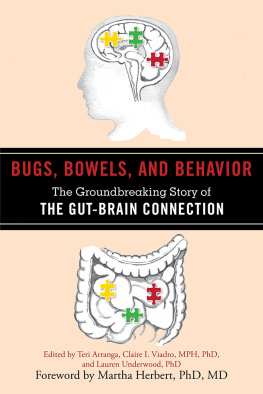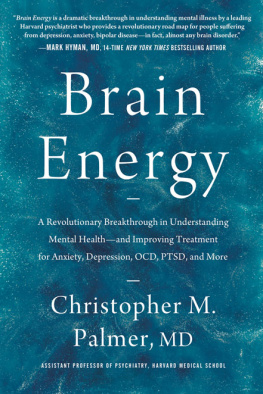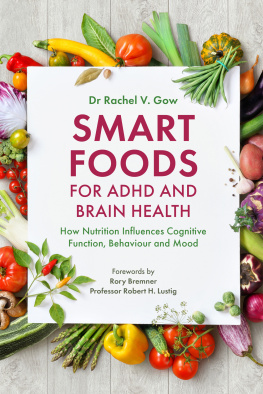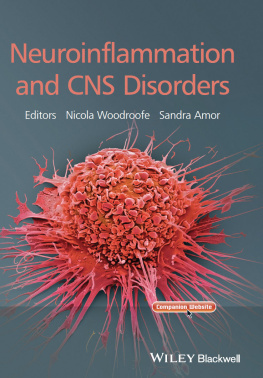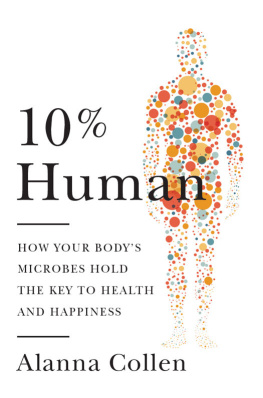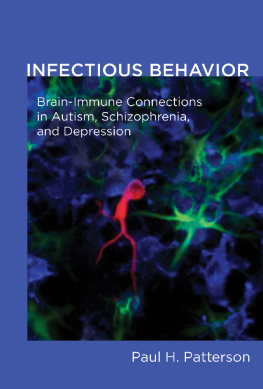Bugs, Bowels,
and Behavior
The Groundbreaking Story of
The Gut-Brain Connection
Bugs, Bowels,
and Behavior
The Groundbreaking Story of
The Gut-Brain Connection
Edited by Teri Arranga,
Claire I. Viadro, MPH, PhD,
and Lauren Underwood, PhD
Foreword by Martha Herbert, PhD, MD

Skyhorse Publishing
Copyright 2013 by Teri Arranga
All Rights Reserved. No part of this book may be reproduced in any manner without the express written consent of the publisher, except in the case of brief excerpts in critical reviews or articles. All inquiries should be addressed to Skyhorse Publishing, 307 West 36th Street, 11th Floor, New York, NY 10018.
Skyhorse Publishing books may be purchased in bulk at special discounts for sales promotion, corporate gifts, fundraising, or educational purposes. Special editions can also be created to specifications. For details, contact the Special Sales Department, Skyhorse Publishing, 307 West 36th Street, 11th Floor, New York, NY 10018 or info@skyhorsepublishing.com.
Skyhorse and Skyhorse Publishing are registered trademarks of Skyhorse Publishing, Inc., a Delaware corporation.
Visit our website at www.skyhorsepublishing.com
10 9 8 7 6 5 4 3 2 1
Library of Congress Cataloging-in-Publication Data is available on file.
ISBN: 978-1-61608-736- 4
Printed in the United States of America
Chapter 15 is excerpted from Waging War on the Autistic Child by Andrew Wakefield (Skyhorse Publishing, 2012). Used with permission.
To Ian, whose inspiration has brought forth education to me and to others for the good of children, families, and the public health.
~~ Teri
To David, Logan, and Casey, who have taught me so much about love thank you for patiently tolerating my culinary and health explorations and filling my life with music.
~~ Claire
To Rachael, for inspiring me to be the person I am today; for all those who have been there for us along this journey (too many to name you know who you are); and to Priya, who is always by my side.
~~ Lauren
ACKNOWLEDGEMENTS
Thanks are extended to Lauren Underwood, PhD, who kindly
performed scientific editing and consulting for this book;
Laurette Janak, who reviewed literature; Tony Lyons and Skyhorse
Publishing for courage in journalism; the books excellent designer,
Fiona Mayne; AutismOne for support of this work; and all of the
courageous clinicians and researchers of integrity who put the
health of the public first.
Disclaimer
Information is not provided as medical advice. Patients/caregivers should research all information given. Every persons physiology is unique. All information should be discussed with the patients personal physician and/or other specialist appropriate to the symptom(s) or body system(s) involved in their individual situation, who provides the patient with regular medical oversight, monitoring, and lab testing, and who keeps up-to-date on the most recent research and interventions. Beginning any significant biomedical or other interventions that may impact physiology or making changes to an established regimen should be discussed with the patients physician in advance.
CONTENTS
FOREWORD
BUGS, BOWELS, BRAINS
BEHAVIOR AND THE
EMERGENCE OF BRAIN-BODY-PLANET MEDICINE
By Martha Herbert, PhD, MD
Bugs, bowels, brain, and behavior have been neatly packaged in separate domains of research. Brain and behavior have been linked, but bugs are only recently getting their fair share of attention regarding bowel health. Until not too long ago, linking bugs and bowels with brain and behavior would have been the last thing most behavioral or brain scientists would have imagined. Yet clinical challenges are forcing the issue, and the boundaries between domains are becoming permeable.
The way to build links across these domains is to dive deep under the surface. Our human eyes and other senses perceive humanscale phenomena, but our bodies dont have built-in microscopes or molecular analytics. These beneath-the-surface activities include the underlying levels of biology by which bugs influence the bowels and brain, and they shape how brain creates behavior.
People have often tended to simplify things into a linear stream of events. One of the most common is the idea that genes come first, then they create molecules, and then these molecules cause behaviors. This story about biology assumes that causation occurs in just one direction. Its easy to grasp, and it feels compelling because we hear so much about new genetic discoveries and how genes ostensibly cause problems in brain and behavior. But it leaves a lot of steps out of its narrative. Moreover, claims of genetic causation are coming apart with overwhelming evidence for greater degrees of complexity; this encourages us to see genes not as uniquely causative but as contributory, and it supports our appreciation of the influence of other types of contributors as well.
Linking bugs, bowels, brain, and behavior is really a problem of multiscale systems biology. This refers to an emerging approach that is the broader scientific movement in which the exploration of bugs, bowels, brain, and behavior resides. The term multiscale highlights the many levels at which biological systems operate simultaneously. Bug biology, bowel biology, brain biology, and behavior all are in a dance with each other. Control does not come from any one level, but instead there is influence back and forth across many levels in a vastly complex multiscale interconnected web.
A related framework that helps understand the linkages tackled in this rich volume is the middle-out approach. Middle-out is neither top-down nor bottom-up. Denis Noble, in his eloquent book The Music of Life, uses musical metaphors to show the interplay among genes, multicellular harmonies, organs and systems in the body, and the brain. In his view, genes dont do anything, and they dont determine things, but rather they set certain parameters that constrain the dance. In this framework, the action is at the physiological level, and behaviors are emergent properties that come out differently depending on the way the physiological dance plays out.
In this multiscale dance extravaganza, one of the critical questions is transductionhow do activities at one level turn into influences at another? A classical example is sensory transduction. We know a fair bit about how light turns into the colors, shapes, and movements we see: light enters the eye, where it triggers a complex computational cascade among a network of highly organized cells in the retina. This generates highly structured nerve impulses that then travel through the brainstem and then into the cerebral cortex through processing stations that make progressively more complex connections, first just with this visual information and then taking account of more and more other information as well. We can tell a similar story about how we hear: vibrations in the air are transduced into what we experience as sound by going through the eardrum into the middle ear, which excites the tiny pitch-sensitive hairs of the cochlea, gets its initial processing in the brainstem, and then gets further sorted out in the primary and associational auditory areas of the cerebral cortex.
In elucidating the links between bugs, bowels, brain, and behavior, we are literally fleshing out the mechanisms by which transduction across the different levels of activity in each of these levels actually occurs. Bugs can exert their influences through myriad mechanisms, such as chemical and immune. These mechanisms directly or indirectly affect the brainand teasing out just how this influence occurs is at the core of the various chapters in this volume. Bugs in turn have their own behavior, this, in turn, is influenced by the milieu in which they operatehow resilient is the system? What is the nutritional status and how will this bias bug behavior? What are the properties of the foods passing through the gut, and how do they shape gut behavior? What sorts of toxic and electromagnetic modulation may be changing the biochemical, bioenergetic, and resonance properties altering cellular behavior? Are the intestinal villi healthy or worn down? Are the junctions between the cells tight or dysfunctional? How vibrant or vulnerable is the gut wall?

